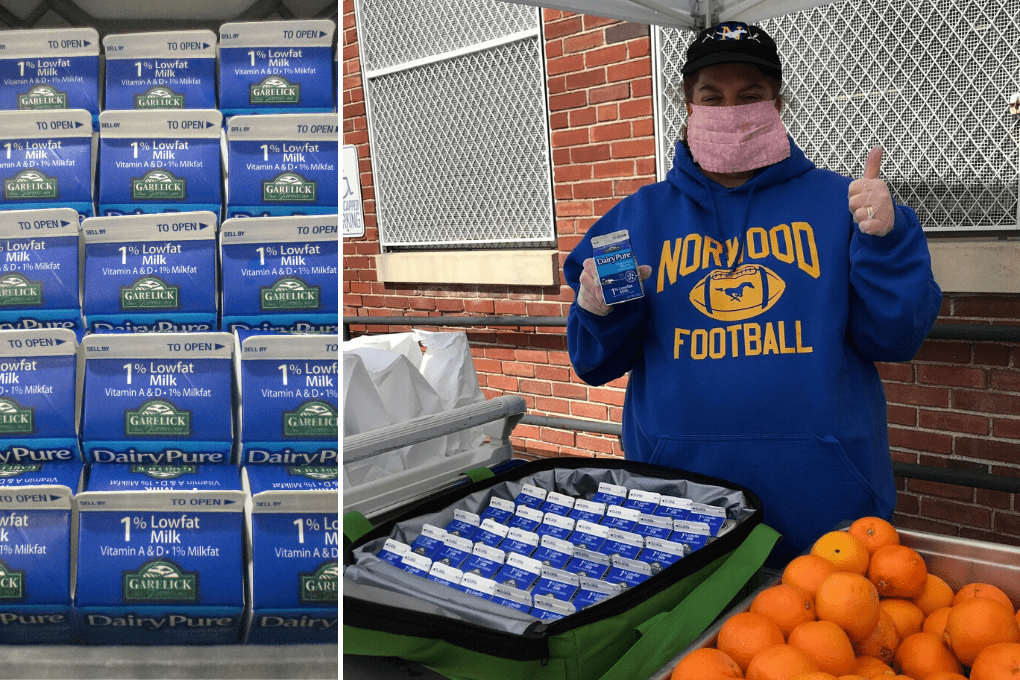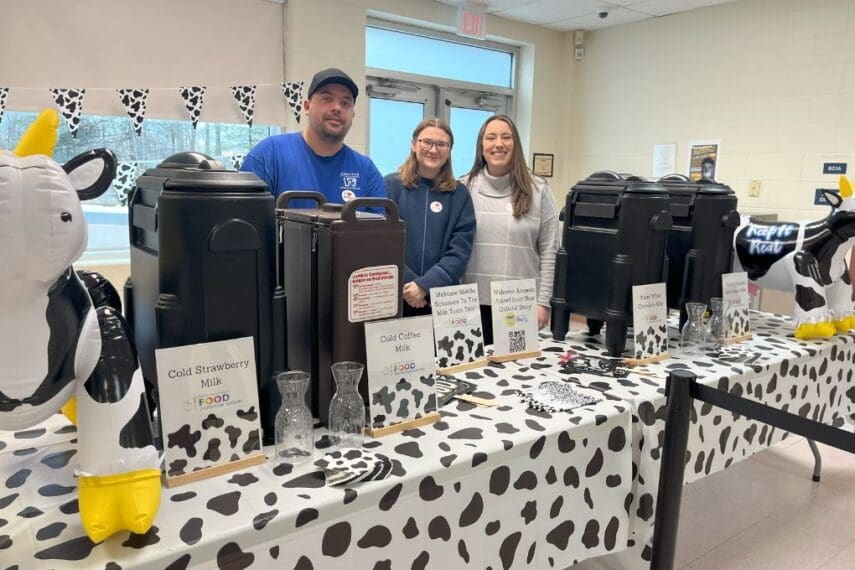
School Nutrition Heroes–New England Dairy and the dairy farm families of New England applaud you for the work you are doing to nourish your students. We know that you and your staff had to re-think every aspect of serving meals to your students and the fact that you were able to mobilize so quickly to meet the needs of your community is amazing. Thank you!
Our local dairy farmers continue to operate around the clock to make milk for dairy products across our region, and milk remains an important part of school meal programs during the COVID-19 crisis. Milk is the top food source of three nutrients Americans don’t get enough of– calcium, vitamin D and potassium; but for many students in need, basic staples like milk and the critical nutrients it provides are missing. This is especially true in our current environment where more people are reliant on food assistance programs and limiting trips to the grocery store. According to Feeding America, milk is one of the most requested items at food banks, but it often isn’t available. By providing milk with school meals, you are helping to provide a nutrient-rich beverage to students who may not get it otherwise.
With new methods of providing food and growing needs in our communities, we recognize that some programs are experiencing challenges safely transporting milk or refrigerating the quantities of milk needed. There is no one size fits all solution, but here are some ideas to consider as you determine the best way to serve milk safely to the students in your community:
- If you’re looking for solutions to keep milk cold during meal distribution:
- Portable coolers may be a solution, especially with meal delivery. To date, New England Dairy has purchased and donated nearly 1,400 portable coolers to 76 school districts across New England.
- If serving meals near the entrance of a building, consider moving refrigerated milk coolers closer to where you distribute meals to keep milk cold and easily accessible.
- Pack milk along with items that can be distributed frozen and create an instant ice pack.
- If overall refrigeration space is an issue to store milk deliveries:
- Explore partnering with a milk/food distributor or local community agency that has refrigerated trucks so that milk can be transported and provided directly from the refrigerated truck during your meal service.
- Check with local restaurants, universities, or other institutional food service operations to see if they have refrigeration space available for use. Note: Farm to Institution New England has created this matchmaking spreadsheet to match up needs and surplus in the New England institutional food system.
- Consider offering shelf-stable milk. Tip: While this milk doesn’t need to be refrigerated, it does taste better when served cold.
- If you’re providing multiple meals at a time:
- Think about providing milk in larger portion sizes to meet meal requirements. For example, if you’re serving 4 meals at a time, you could provide a quart of milk (32 oz), rather than 4 half pints.*
With all service models, it’s important to work with your local Board of Health on your plans for meal distribution and to provide information on food storage to families where applicable to help mitigate any food safety risks.
We want to hear from you! We’re sure many of you have already implemented creative solutions for serving milk, and we hope this has helped to spark some new ideas as well. Please email info@newenglanddairy.com to tell us what you are doing and include a photo if possible. We will collect and share innovative ideas with our networks across New England.
If you are experiencing challenges storing or keeping your milk cold during distribution, please reach out to your New England Dairy contact or email info@newenglanddairy.com. Our staff will work with you to find a solution to continue providing nutrient-rich dairy to your students. Your students need it now more than ever!
Other Resources:
Keeping Milk Cold: Downloadable resources to help keep milk cold and safe.
*Check with your state agency before making any changes to your milk offerings (size or type of milk)



